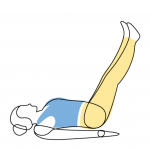Hell hath no fury – like a swum-over swimmer
The subject of proper pool behaviour seems as inexhaustible as a marathon swimmer. A few weeks back in our newsletter we shared links (see below) to posts on the subject from a couple of swimming bloggers and received a strongly worded response from Bob Anderson. With his permission we have shared his email below, in full, despite the inclusion of some criticism of H2Open!
“Dear Simon
I can contain my fury no longer. The sheer arrogance, conceit, ignorance and utter selfishness of “Lone Swimmer”, “Swim4Good” and their followers are simply breathtaking. It is them, NOT the rest of us leisure/fitness swimmers, who don’t know how to swim considerately in a shared lane.
Just ask yourself WHY should the fast swimmers have priority? Write down your reasons, list out what it is that make you think their needs are so special, and then ask yourself whether it might just be possible that those reasons and needs could also apply to the rest of us! The fast folk want to be able to stretch themselves by swimming continuously without interruption. You will be amazed to discover, if you bothered to ask, that is exactly what the rest of us want to do to as well.
Look at it this way – when you are driving in a line of traffic on a single track road you do not expect the cars in front to get out of your way. You wait until it is safe to overtake before trying to do so. If your fast swimmers drove the way they expect to be able to swim, then the courts and the morgues would be full of them and their victims. Why should they expect to behave differently in what are, in effect, identical circumstances?
So, no – when swimming down the lane, the fast swimmer simply has to wait until the centre/other side is clear for them to overtake. Suggesting that other swimmers should pull over is simply ludicrous – that is like forcing other drivers onto the hard shoulder!
The other points made in the various articles are generally sound – indeed, I could do serious harm to people who push off in front of me – but the real problems and confrontations come at the turns. The bald statement that slower swimmers must simply stop, get out of the way, and allow the fast swimmers to do their tumbles or whatever is utterly selfish and totally lacking any understanding or sympathy for the needs and reasonable expectations of the other swimmers. There is no need at all for either swimmer to be held up or inconvenienced at all provided both maintain a good awareness of the other’s speed and position in the lane. This comes easily after a few lengths and a settled pattern has emerged. The swimmer in front needs to look over their shoulder at around the five metre mark to check where the pursuing swimmer is and assess how quickly they will reach the wall.
Then:
- If the pursuing swimmer either already has an overlap or will reach the wall more quickly or around the same time – the fast swimmer goes to the opposite corner, turns and accelerates away down the lane line while the slow swimmer goes to the centre, turns, starts down the centre line and then pulls across to the lane line as soon as they can
- If the slower swimmer decides they will reach the wall first, this procedure is reversed. The slow swimmer goes to the far corner and starts back down the lane line. The fast swimmer turns in the centre, accelerates away down the centre and then crosses over to the lane line as soon as they are clear of the slow swimmer (who should slow down a bit if necessary to prevent any head-on collisions in the centre – common sense needed here).
- If there are two fast swimmers, the same basic procedure applies – “fast 1” to the corner, “fast 2” to the centre, slow straight to the end.
- More than two fast swimmers means that “fast 3” and any others just have to wait and either overtake in the lane, if they can, or wait until the next turn.
Fast swimmers can cause major problems in lanes if they are swimming “sets” because every time they stop, they break the pattern and the other swimmers have to recognise this has happened and then rediscover the new pattern. This can be very frustrating and will always take several lengths before things settle down again. In these circumstances, the fast swimmers have to recognise that they are responsible for any confusion until the new pattern is established.
This is how I swim in lanes and, with only rare exceptions, the faster swimmers try it out and usually comment that it worked well. It does place the onus on the slower swimmer – and I do admit that some of those do need some remedial training!
This idea that “fast” takes precedence has come from the distant past when swimming club coaches couldn’t get enough dedicated club time and so tried to turn public general swimming sessions into club training sessions. They used the “might is right” principle simply to drive everyone else out of the lanes and, to their shame, most pool managements allowed (and continue to allow) them to do so. There simply is no valid reason whatever to grant fast swimmers the right to prevent ordinary mortals from enjoying their equally challenging swims.
Oh yes, one other thing, having your swimming cap on sideways is not a sign of idiocy. If you really are a speed freak then think what the resistance of the side-to-side wrinkles in your cap are doing to those hundredths of a second each length – putting it on sideways means the water flows smoothly between the wrinkles! More significant to those of us who do put our caps on sideways, it is almost impossible to obtain a swimming cap that fits down over a chap’s ears but if you put it on sideways it often does – a matter of comfort – but why nobody makes adult man-sized caps is a mystery.
You claim that your magazine is for all swimmers yet, on this issue, you are obsessed with the speed types and are totally ignoring the rest of us*. Just because we take half-an-hour to do a “K” doesn’t mean that we don’t have exactly the same needs as the folk who knock ’em off in half that time. I have done a number of “Swimtreks” and was a member of a successful Channel relay team last summer so I can claim to be a “fit and proper” person to be in a lane and to comment on these matters.
So, returning to my start point – ask yourself why fast swimmers should have priority. I think that, if you are honest with yourself, the only reasons you will come up with are selfish ones that rely entirely on depriving other, slower, swimmers of their right to swim!
Over to you, with Best wishes
Bob Anderson”
*Please note, we aim to be a magazine for all swimmers. See below for our previous posts on this subject where we share some thoughts on lane etiquette.
http://www.h2openmagazine.com/editor-s-blog/dealing-with-lane-etiquette-and-lane-rage.html
http://www.h2openmagazine.com/editor-s-blog/lane-etiquette-for-open-water-swimmers.html
To read the posts that stirred Bob Anderson’s ire, see:






